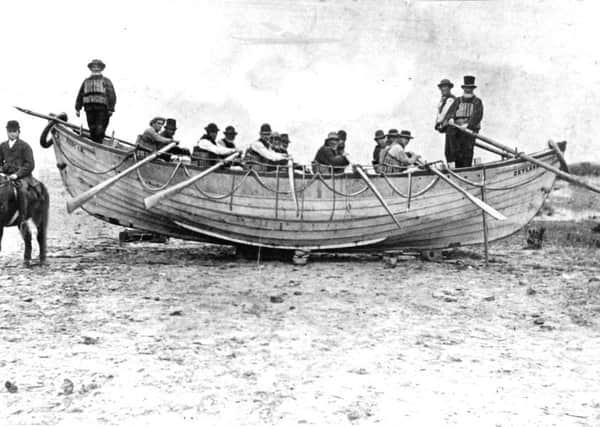Seaside town of Redcar boasts Yorkshire's most unsung piece of history


Today, administratively at least, Redcar still hasn’t been formally returned to Yorkshire but in every other respect this is a town full of proud Tykes.
“It says I’m a Yorkshireman on my passport,” Fred Brunskill tells me at the Redcar Heritage Centre, where a Welcome to Yorkshire membership plaque is displayed at the entrance.
Advertisement
Hide AdAdvertisement
Hide AdFred is chairman of the centre, which gives pride of place to the world’s oldest surviving lifeboat - perhaps Yorkshire’s most unsung piece of history.
The Zetland first put to sea in 1802, three years before the Battle of Trafalgar, and in the course of 78 years of service its crews saved over 500 lives.
Measuring just 5m long and 3m wide its builder was Henry Greathead from Richmond in North Yorkshire, who designed what he claimed was an unsubmergable craft by including seven hundredweight of cork.
Four pairs of oars powered the boat - white on one side and blue on the other to aid the commands shouted in gales - and two red oars were used for steering.
Advertisement
Hide AdAdvertisement
Hide AdInitially the Zetland was privately run, paid for by locals, then taken over by the newly formed Royal National Lifeboat Institution (RNLI) in the 1820s.
In all its hundreds of rescues only one lifeboatman was ever lost. On Christmas Day 1836, the bowman William Guy was washed overboard during a failed attempt to rescue the crew of a Danish brig, Caroline, which had foundered on Redcar Rocks.
Rescues often involved colliers from the pits of Northumberland and Durham and fishing craft from Whitby to the south.
Redcar’s own fishing fleet was smaller, and today still only amounts to a dozen cobles potting for lobsters. They used to line-fish for cod but one fisherman tells me the cod have all gone north.
Advertisement
Hide AdAdvertisement
Hide Ad“The water’s too warm here now,” he says. “The most we catch are a bit of mackerel to bait the pots.”
Redcar now has a state-of-the-art RNLI station station further along the esplanade from the Zetland’s home, and two powered inflatables. The majority of rescues involve holidaymakers getting stranded on rocks, most recently when three children were cut off by the incoming tide last month.
The Zetland is about to undergo a major crowdfunded restoration to have its timbers treated against woodworm and other infestations, and this autumn will leave the heritage centre for the first time since 1907.
“There’s a hell of a history there and we need to protect that,” says Fred Brunskill. “It’s listed on the National Historic Ship Register along with the likes of the Cutty Sark and Mary Rose.”
There’ll be a new lick of paint but otherwise, he promises, all the original knocks and bangs from 78 years of rescues off the Yorkshire coast will still be there.